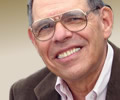Sergei Lemeshev (1902-77) and Ivan Kozlovsky were the two great Russian tenors of the first half of the 20th century. I’ve already covered the latter and promised to get around to Lemeshev later. Well, later is today. Lemeshev was born to a peasant family in the Kalininsky District of Tver Oblast in the Russian Empire. He was sent to Saint Petersburg to become a cobbler. He started singing when he was 15. He moved to Moscow where he studied at the Moscow Conservatory from 1921-25. During 1926 and 1931, he sang in the theatres of Sverdlovsk, Harbin, and Tbilisi. The Harbin gig could have gotten him killed as the Chinese city was a refuge for defeated White Russians after the Civil War. NKVD director Nikolai Yezhov had many of the singers who appeared in Harbin shot during the Great Terror. But Lemeshev had joined the Bolshoi Opera in 1931 which shielded him from the purge.
Lemeshev was an immediate success at the Bolshoi and rapidly attracted a devoted group of female fans a la Frank Sinatra a decade later. He had 5 or 6 wives, sources vary on the exact number, and numerous extramarital liasons. His best years were 1931-42. In 1942 he contracted tuberculosis which left him with one functioning lung for the remainder of his life. Eventually he had a pneumonectomy. Remarkably, he continued to sing with great effect after the onset of his pulmonary disease.
Lemeshev said that he did not have a naturally great voice and that his success was the result of very hard work. His singing is characterized by great vocal control, a bright sound, and flawless technique. Though a lyric tenor, his fine technique allowed him to sing heavier roles like Rodolfo in Luisa Miller and the title role in Lohengrin. His career was limited to the Soviet Union, though he did appear in East Berlin in 1947. Many observers think that he was the greatest of all Russian tenor since the start of the recording age. You can judge for yourself from the excerpts below. Almost all of his recordings are in Russian, though I do have one in Italian. His sound is Slavic and does not have the Italianate or Gallic ring associated with the Italian and French arias that Westerners are accustomed to.
His most celebrated role was as Lensky in Tchaikovsky’s Eugene Onegin. He sang the role 501 times, the last performance at age 70. Kuda, kuda recorded in 1937 shows the tenor’s very lyrical approach to the famous aria and his extraordinary pianissimo singing.
Salut demeure chaste et pure from Gounod’s Faust was recorded in 1934. Lemeshev gives it a stylish reading with a solid high C at the end. Je Crois Entendre Encore from Bizet’s The Pearl Fishers, is given a beautiful performance in this 1938 recording. Lemeshev’s vocal line and brilliant shading puts his at the top of the list of recordings of an aria that almost every tenor has attempted. Werther’s last act lament Pourquoi me reveiller also recorded in 1938 shows his total control of the vocal line and the ability to effortless shade his sound. The last French aria, if you consider Meyerbeer a French composer, is O Paradis from L’Africaine recorded in 1940.
Two Verdi arias: Quando le sere al placido from Luisa Miller and Parmi veder le lagrime from Rigoletto. Both require and receive a long and elegant line. He interpolates a high C-sharp at the end of the latter aria and then takes a diminuendo on it. Both are from 1940.
Una furtiva lagrima from Donizetti’s L’elisir D’amore is the only aria sung in Italian. It was recorded in 1946 when Lemeshev was operating with just one functioning lung. Remarkable! Rossini’s Tarantella was recorded with two functioning lungs in 1936. M’appari from Flotow’s Martha was recorded in 1939.
Three Puccini arias: Che Gelida Manina from La Boheme, followed by the two tenor arias from Tosca. Recondita armonia and E lucevan Stelle. The Boheme aria is not up to Lemeshev’s usual standard. He strains a bit at the beginning and is sound is not as bright as is typical for him. The two Tosca pieces on the other hand are beautifully sung with a virile and nuanced tone. Finally a bon-bon. Arlecchino’s Serenade from the second act of Leoncavallo’s Pagliacci. It was recorded in 1929 two years before the tenor joined the Bolshoi.
Of course, lemeshev sang all the standard Russian roles. He was also renowned for his singing of Russian art songs and folk songs. Clearly a great artist.






